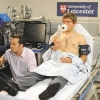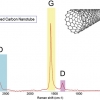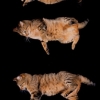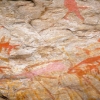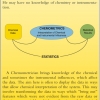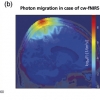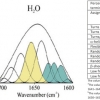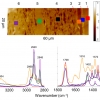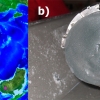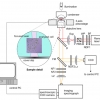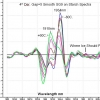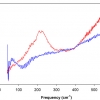There are many reasons for quantifying VOCs in air, from investigating pollution to diagnosis of diseases in humans. PTR-MS has many advantages for this, not least in speed and ability to provide an online analysis. It is a relatively young technique, but has a range of applications from botany and medicine through to industrial process monitoring, security screening, environmental analysis and food science.
Articles and Columns
Pages
This article explains what is represented in a Raman spectrum of carbon nanotubes and how to optimise the measurement. There is actually significant diversity within samples of nanotubes which affects both the material properties and the Raman spectrum of the material.
Peter Jenks has discovered quantitative NMR. in his article titled “NMR: is it the future for the analysis of organic molecules?”. If only it wasn’t so expensive, it might be the perfect method to certify pure organic compounds.
Even though lead in fuel has been banned for a number of years, it is still present in by the roadside, as are many other pollutants from vehicles. The combination of Raman spectroscopy and µ-ED-XRF is of particular value. The advantage Raman has is in the possibility of focusing on individual grains, thereby obtaining the spectrum of each grain that comes from traffic-emitted particles.
In principle, electromagnetic SEIRS should be as strong as electromagnetic surface-enhanced Raman scattering (SERS) but, in SEIRS, disturbing fluorescence is absent. In order to get maximum IR vibrational signal enhancement for sensing of rare molecules, strong resonant scattering of plasmonic objects is recommended.
Tony (A.N.) Davies and Robert Lancashire remember Bob McDonald who co-authored the first JCAMP-DX standard for infrared spectroscopy.
How a cat manages to turn and land on its feet may not be the most obvious start to an article in Spectroscopy Europe. However, C.J. Milne and M. Chergui use the example in their article on “Time-resolved X-ray absorption spectroscopy” to show how the time dimension is important in many analyses and applications. There has been a real surge in time-resolved X-ray absorption studies in chemistry, biology and materials science. Picosecond time resolution is routinely achieved and femtosecond resolution has been demonstrated at synchrotrons, albeit at the cost of a significantly reduced photon flux. However, the advent of hard X-ray-free electron lasers offer the promise of making such studies routine.
This article reviews the history of Mössbauer spectroscopy as well as looking at the ide range of applications it can address.
Peter Jenks and John Hammond continue their series on “CRMs and PT in an ISO 17025 accredited laboratory” with instructions on how you can prepare your own in-house certified reference materials.
Tony Davies makes sure we understand “What IS and what is NOT chemometrics” and why it matters.
“Measuring brain activity using functional near infrared spectroscopy: a short review” by Felix Scholkmann and Martin Wolf looks at the various methods for performing fNIRS and some applications that demonstrate why this non-invasive, safely applicable, portable and cost-effective method is now an integral part of the techniques used in neuroscience.
“Mass spectrometry investigations of nanoparticles by tandem charge detection mass spectrometry” by Tristan Doussineau, Philippe Dugourd and Rodolphe Antoine describes how the limitation of conventional mass spectrometry for weighing macro-ions with masses higher than one megadalton can be overcome with the technique of charge detection mass spectrometry and how they have developed such an instrument for performing MS/MS. This has potential for exploring the “nano world”.
A. Roque, I. Ponte and P. Suau look at “Infrared spectroscopy of nucleoprotein complexes”. The advantages of IR spectroscopy have allowed them to determine the structure of linker histones and protamines as they interact with DNA. Linker histones are involved with the condensation of the thick chromatin fibre and are believed to have a regulatory role in transcription through the modulation of chromatin higher order structure.
It is possible to obtain both infrared spectra and thermal analysis data of individual layers in a cross-sectioned multilayer film. Since both techniques are AFM-based, the topographical features can be readily linked to the spectroscopic and thermal data at a much higher spatial resolution than previously achievable.
The study of dust particles in our atmosphere is important since they can act as a suppresor of global warming. The analysis of historical levels of dust in the atmosphere through ice cores is vital in this work. Synchrotron-radiation spectroscopic techniques such as TXRF and XANES can be used to analyse extremely small amounts of dust.
Peter Jenks looks at some current trends in the supply of CRMs and proficiency testing and highlights difficulties labs may have been when no commercial CRM is available. This will be followed with a second part looking at the production of in-house reference materials.
Following lipids in the food chain: determination of the iodine value using Raman micro-spectroscopy
Raman spectroscopy is used to monitor the iodine value of algal-derived fish feed for its lipid content and to monitor algae samples for biofuel production.
Whilst fireworks are a great entertainment, they can also be used for illegal activities as well as potentially containing dangerous chemicals. The combination of Raman spectroscopy and SEM-EDS turns out to be a very efficient analytical method. In fact, these complementary techniques may also be used to analyse other kinds of pyrotechnic artefacts, low explosive formulations, high explosives, explosion residues etc.
The Tony Davies Column once again contains a contribution from Karl Norris, who is widely regarded as the “father of NIR spectroscopy”. Karl continues to produce innovative ideas about the field and this article is no different. Building on the previous article concerning fourth derivatives, Karl has investigated the effect of varying gap sizes with some remarkable results.
The use of the terahertz region is in the headlines at present with its ability to screen passengers at airports, but it has important uses in the analytical field as well. This article reviews the latest research on proteins and peptides using THz-TDS, p-germanium lasers (75–85 cm–1) and far-infrared Fourier transform spectroscopy below 350 cm–1.

